Barbarossa 1941 – USSR Invaded 75th Anniversary Series [Part Four]
July 11, 2016 by crew
Welcome back once again, Beasts of War, to our commemorative wargaming explorations of Operation Barbarossa, the Axis invasion of the Soviet Union in 1941. This assault, the biggest in history at the time, ignited what is known today as “the Eastern Front,” by far the largest part of the Second World War.
So far we’ve seen...
- Part One: The opening invasion and first Soviet counterattacks
- Part Two: The Battle of Dubno and crossing the Dniepr River
- Part Three: Northern operations and the massive Battle of Kiev
But now the autumn rains have set in and the German advance, all but unstoppable until now, finally seems to be stumbling. Stiffening Soviet resistance and a bewildering lack of focus the German operational plan aren’t helping matters. Technically, Operation Barbarossa has already failed, but a new assault is already brewing.
The Hungarian Fast Corps
October, 1941
As mentioned in previous articles, the Germans had plenty of allies when they invaded the Soviet Union. Another of these was the Royal Hungarian Army, which contributed a 40,000-strong “Carpathian Group” (spearheaded by the semi-armoured motorized “Rapid Corps”) to Army Group South.
This Hungarian Rapid Corps achieved notable success during the encirclement of Uman in July and the Battle of Nikopol in August. However, losses were always severe. Part of the reason is (to put it cynically) that the Germans considered such “allied” units to be expendable, and they were poorly equipped compared to German formations.
One of Hungarian Rapid Corps’ more celebrated moments came after the Battle of Kiev, when the German 17th Army was advancing toward the Donets River. Despite being battered down to just six battalions, the Hungarian Fast Corps (part of 17th Army) was ordered to break through a strong section of the Soviet line held near Pobjeda.
However, the Hungarians outflanked the Soviets (instead of driving straight through) and hit the Soviet 270th Rifle Division from the side. After a hard-fought but successful battle, the Hungarians destabilized Soviet defences enough to let the 17th Army mount a breakthrough toward the key cities of Voroshilovgrad and Izyum.
In November, the battered and exhausted Rapid Corps would fight two more bitter engagements just south of Izyum until the Germans finally took the city and secured a bridgehead over the Donets River. By this point, however, the Rapid Corps had lost thousands of casualties and almost all their vehicles, and were withdrawn in early December.
The Typhoon Strikes
Mtensk - October 2nd, 1941
With Leningrad now under siege in the north and Kiev fallen in the south, the invaders finally shifted their attention back on the central prize: Moscow. Technically speaking, Operation Barbarossa was over. A new invasion plan had been drawn up for what the Germans hoped would be the final effort in the east: Operation Typhoon.
If successful, this assault could end the campaign in Russia. If Russia has to sue for peace, with the US still neutral and Great Britain hanging by a thread, Germany just MIGHT win the whole war right here. If you want an operation where the total outcome of the World War II could really have swung Germany’s way, it’s this one.
The main push of Operation Typhoon opened on October 2th, 1941. Even considering the firepower available to these reorganized German armies, the attack met with stunning initial success. The heaviest blow came right up the Smolensk-Moscow highway, where the Soviets had fortified a massive new line of defence near the town of Vyazma.
The result, however, was all too familiar. The panzer groups carved out yet another series of vast encirclements, and within weeks the bulk of seven Soviet armies … SEVEN … were lost in or around of Vyazma. Almost 700,000 more men were gone, and the road to Moscow was torn open yet again.
To the south, meanwhile, Guderian’s newly reorganized “Second Panzer Army” (formerly Panzer Group II) had opened its own offensive. The idea was to outflank the main Soviet defences centred on Vyazma, drive through Orel and Tula, and eventually approach Moscow from the south.
At first Guderian did very well, his lead units took the city of Orel so fast that Soviet authorities didn’t have time to cut electrical power. However, he was about to hit a very serious obstacle in the form of the “1st Special Guards Rifle Corps” … a new type of unit that slammed the 3rd and 4th Panzer Divisions to a dead halt near the town of Mtensk.
The 1st Special Guards Rifle Corps is a tough unit to research, since it only existed for about ten days. Incorporating the new Soviet tank brigades and more T-34s and KV-1s, the unit possessed much greater operational speed and effectiveness than the old bulky “tank divisions” loaded with old models. Despite it all, the Soviets were learning.
One of the key units of the 1st Special Guards Rifle Corps was the 4th Tank Brigade, commanded by a man destined to become of the truly great tank generals of World War II. This was Mikhail E. Katukov, who’d be leading earth-shaking armour battles from the first week of Barbarossa though the last shots fired in Berlin.
Since his first taste of combat at the nightmarish Battle of Dubno and the bitter retreat across the Ukraine, Katukov had been developing new tank tactics and training his officers to apply them. These involved concealed firing positions, dummy firing points, secondary fighting positions, prepared lines of phased retreat.
Many of these ideas may sound “simple” or “basic.” Just remember the Red Army’s officer corps had been gutted by Stalin before the war, and those that survived had mostly been killed by the Germans. Katukov was one of the few who was re-inventing the Red Army from the ground up, and in the heat of apocalyptic combat, no less.
Still, Katukov (and the rest of the Red Army) had a long way to go. Shaking off the setback on October 6, the panzers struck again on October 9. They cracked the Soviet line, and what remained of Katukov’s brigade fell back with other units across the Zusha River over a damaged rail bridge in the middle of the night, still under German fire.
The Germans, however, had already run out of time. The first snows fell on October 7th. Their spearheads, having advanced 200 miles in the first week, advanced only 20 miles in the second week. Guderian himself would grumble in his memoirs that Mtensk saw a marked improvement in Soviet tactics, equipment, and operational planning.
Katukov, meanwhile, would receive the Order of Lenin for his fighting around Mtensk, and his 4th Tank Brigade would become the 1st GUARDS Tank Brigade on November 11. On that same day, Katukov was promoted to Major-General, and was well on his way to becoming one of the great Red Army tank commanders of World War II.
Napoleon’s Battlefield
Borodino - October 16th, 1941
Many people like to draw comparisons between Napoleon’s invasion of Russia in 1812 and Hitler’s invasion of 1941. Few people realize just how similar these invasions actually were in places. One 1941 battle unfolded on the exact field as one of 1812’s bloodiest battles, the eerie coincidence not lost on the men or commanders who were there.
Earlier in this article, we discussed the cataclysmic Battle of Vyazma. The bulk of seven Soviet armies were chopped up into a series of pockets that collectively cost them even more than the disaster at Kiev. For the first time in the war, Germans forces actually outnumbered the Red Army.
While these pockets were being reduced, the German XL Motorized Corps (including the SS “Das Reich” division and Vichy French volunteers) were among the spearheads racing eastward to exploit the breach. But they met fierce resistance at the historic battlefield of Borodino, where Russia’s fate had been decided against the French in 1812.
Needless to say, the Soviets were scratching together a new defence in the wake of Vyazma. This would be the “Mozhaisk Line,” centred just 60 miles from the heart of Moscow. After advancing some 600 miles so far (almost a thousand kilometres), one can understand how the Germans assumed their invasion of Russia was all but won.
First to hit the Mozhaisk Line (at Borodino) was the aforementioned XL Motorized Corps, which included elements of the 10th Panzer Division and the Waffen SS “Das Reich” Motorized Division. Although some of the best troops in the German war machine, these units were also badly worn out and understrength after four months of combat.
Also present were thousands of Vichy French volunteers of the “Légion des Volontaires Français,” or LVF (attached to German 7th Infantry). Like many of Germany’s “allies,” many of these men genuinely feared the threat of Soviet Bolshevism. Others simply preferred military service to the conscript labour they faced back in occupied France.
Standing in their way was the newly-arrived 32nd “Red Banner” Rifle Division. Unlike many in the Red Army, these men were victorious veterans of wars in Mongolia against the Japanese in 1938 and 1939 (where they’d earned their Red Banner status). Now they’d meet the Axis on the exact field where Kutuzov had met Napoleon back in 1812.
The symbolism was lost on no one. Field-Marshal von Kluge spoke to the men of the LVF, reminding them that Germans and French had fought together against the Russians on this very field 129 years ago. Meanwhile, the Soviets staged 32nd Red Banner Division’s HQ on the exact spot of Kutuzov’s headquarters.
Suffice it to say that history repeated itself in full, bloody fury. The advance of XL Motorized Corps came to an abrupt and impolite halt, and they would gain just 30 more miles in the next two weeks. But that also meant that Germans were now just 30 miles from Moscow, when the full freezing force of the Russian winter finally struck …
Hopefully it’s clear that by this point, the campaign in Russia was truly coming down to the wire. THIS was the point where the outcome of World War II hung in the greatest doubt. If the Soviets had been forced to sue for a separate peace, even a temporary one, all the potential trajectories for the rest of the war come into grave, grave question.
Please come back next week as we conclude this 75th Anniversary commemorative article series on the invasion of the Soviet Union. This is one of history’s true turning points, so don’t miss it! Meanwhile, please feel free to keep the conversation going in the comments below, and give us your take on this pivotal campaign of World War II.
If you have an article that you’d like to write for Beasts Of War then you con get in contact with us at [email protected] to find out more!
"After a hard-fought but successful battle, the Hungarians destabilized Soviet defences enough to let the 17th Army mount a breakthrough toward the key cities of Voroshilovgrad and Izyum..."
Supported by (Turn Off)
Supported by (Turn Off)
"...for the first time in the war, Germans forces actually outnumbered the Red Army"
Supported by (Turn Off)































![TerrainFest 2024 Begins! Build Terrain With OnTableTop & Win A £300 Prize! [Extended!]](https://images.beastsofwar.com/2024/10/TerrainFEST-2024-Social-Media-Post-Square-225-127.jpg)









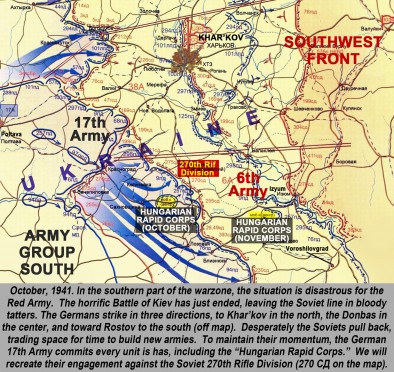
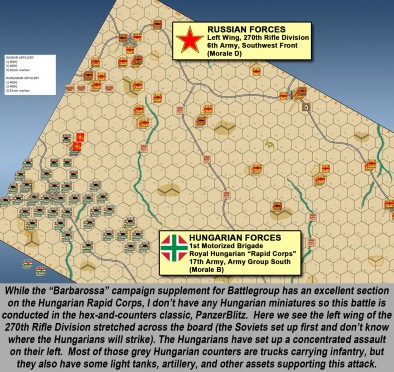
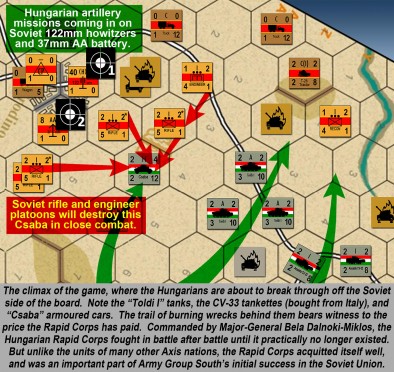
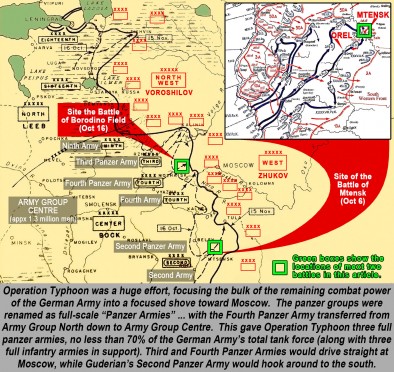
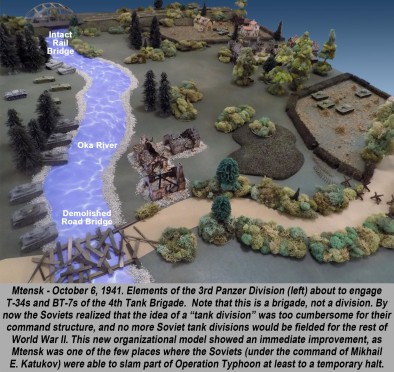
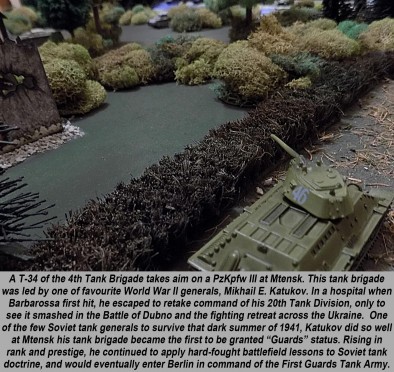
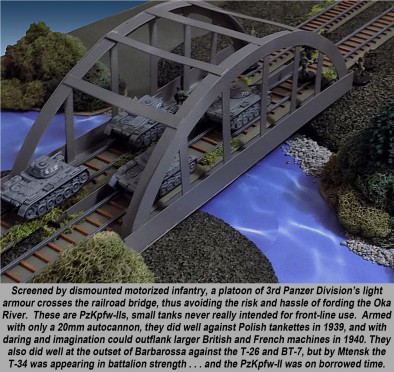
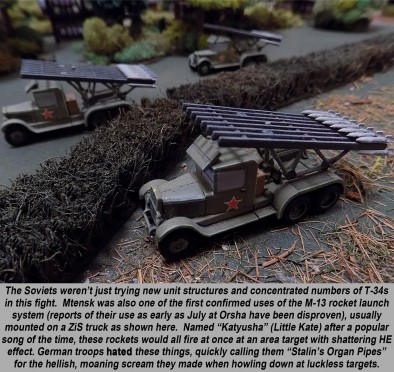

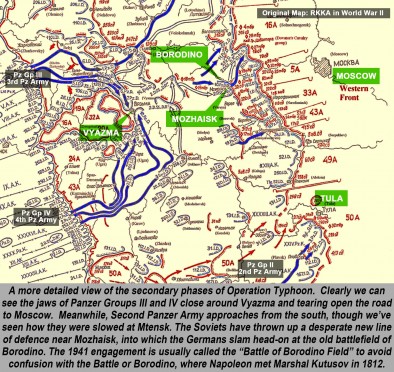

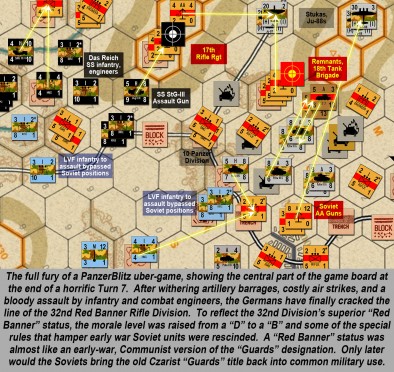


































Excellent as ever. Have you written any historical books or anything? If not you should.
Thanks, @gremlin . Actually, I don’t think I have the right “letters after my name” to write any kind of official history, and really these topics are covered by far better and more knowledgeable historians than I. In some more niche settings, like historical fiction novels, gaming guides (i.e., So You Want to Wargame on the Eastern Front? – not unlike these articles), I have tried my hand . . . and while I’ve managed literary representation and agency contracts, never that elusive publisher. And of course, some internally-published works for the tech company I work for, but that doesn’t… Read more »
Looking forward to you winning the megamillions then. Or should i win we might work something out 😉
Sounds like a plan. 😀
As always an enjoyable read.
Thanks very much, @rasmus . One more to go! I’ll also start posting the Mtensk battle report later tonight or early tomorrow. 😀
Excellent read! Looking forward to article 5!
Are you using a software version for Panzerblitz? I only now noticed how neat the gameboards looked 😀
Are you using a software version for Panzerblitz? Hmm, great question, @neves1789 . The answer is . . . sort of. Really this is just a series of .png, transparent-background images in Microsoft Excel. So I: ** Photoshop together a mapboard I like. Often these are simply .pdf scans of old PanzerBlitz maps from the 1970s (which explains why they may look dinged up in some places). ** Create a file folder of counters somewhere, just one needed for each unit type. Still, this can be dozens of files per faction, but they are very small .png “icons.” ** The… Read more »
Wow, that sounds amazing, especially when played on a tv! Are those files public domain or still under license?
@neves1789 – the games in question (PanzerBlitz, Panzer Leader, and Arab-Israeli Wars) have been out of print for over 30 years now, and the company has been bought by WizKids. I think the license technically still belongs to someone (Multiman Publishing), but they’ve re-designed the game into a frankly inferior version, I feel. So the original counters and maps I think are “fair game.” In some ways like Battlefleet Gothic, the game has been out of print for decades yet kept alive by a loyal community who consistently design their own counters, maps, scenarios, and variants. There are plenty of… Read more »
Amazing! I just downloaded everything I need to get playing, time to get a friend over for some Panzer Blitz! 😀 In the meantime I’ll play some Gary Grigsby’s War in the East!
Thanks for sharing! ^^
No worries, @neves1789 – just bear in mind that, our of the box, PanzerBlitz is a very old and very flawed game. It was probably the first of its kind, first serial-published in “The General” magazine as far back as 1969 – so the basic published system definitely has some teething troubles. Other games have copied this game shamelessly through the decades, admittedly fixing many of its flaws and steadily improving through evolution. But when you’re the first, yeah . . . some mistakes are going to be made. If you try it out and enjoy it, wonderful. There are… Read more »
As always incredible research and presentation of such that even if your not a WW2 gamer there is so much here that you will find yourself waiting for the next installment. A hearty and well deserved thanks must go once more to Oriskany. Faultless mate quite simply faultless.
Thanks very much, @chrisg – although I’m not sure about “faultless.” 😀 I see at least one typo I must have missed . . . 🙁 But seriously, if these articles have a fault, it’s simply that we can only look at a tiny fractional percentage of what was really going on during this incredible and decisive campaign. 😀
Thanks once again for the kind words!
Another interesting read! It’s sad to think it was all pointless since the Germans had already “lost”.
Thanks, @gladesrunner . As far as the Germans having already “lost:” 1) Well, yes, technically, with 75 years of hindsight. I’m sure at the time they thought it was still possible. What choice did they have by this point? 2) While it’s always tantalizing to think about alternate timelines and what would have happened if the Germans had just gone a little further . . . gone a little faster . . . we can never actually be “sad” that the Germas lost. I know what you mean, we also get it a lot here in the US with the… Read more »
interesting that the Germans read the French battle reports but never really learned from them?
on this topic (visions of war) are showing programs on Barbarossa on the 16/17/18 of this month
http://www.visionsofwar.tv/schedule
Awesome, @zorg ! Thanks for the heads up. 😀
Thanks again for another informative article @oriskany. It’s lovely to hear about more of the Russian commanders. While I’d heard of many of the German commanders I’d only encountered Zhukov and Timoshenko on the Russian side. I’ve got plenty more names to look up now. It’s great to hear about a useful Axis ally as well.
Indeed, @seldon9 – the Soviet generals in WW2 in general get a bad rap. Like British, French, or German commanders of WW1, they’re usually portrayed as artless butchers who pushed attacks forward heedless of casualties. This is a flawed and incomplete picture. At the beginning of the war, however, many Soviet commanders were forced into such attacks by political commissars reporting through their own Party-based (not military) chain of command to Stalin. Zhukov of course is always at the top of the list. He’s often described as the general who never lost a battle, although his botch of the Rhzev… Read more »
Mmmmm… Panzerblitz uber-game. *drool runs down chin*
Another informative article with great eye candy @oriskany . You don’t often see “Hungarian Army” and “notable success” in the same sentence in a WWII context. Something of an eye opener!
Can a late war eastern front game be far behind, if only so that you can buy T-34/85’s, SU-152’s, and JSIII’s in quantity, along with a handful of Tigers? 🙂
Just went back to the Panzerblitz boards, junkie that I am, and have a few points:
Those Waffen SS counters are beautiful, and remind me of the original squad leader SS counters.
Also, you’ve used terrain very well on the Soviet side in the Borodino battle! There are some deadly kill zones in there built around reverse slope/built-up areas… yikes. I’m guessing the Soviets weren’t that astute at the time! Looks like a real slog for the Germans.
Thanks, @cpauls1 😀 Indeed, that Borodino game was pretty huge, about as big as I like a usual PanzerBlitz game to get (about six hours to play). Although only two boards (scaled by the measure of the actual battlefield), the force density was very high. All told there were well over 250 counters on the table. Sometimes when you get enough measurements and metrics of a battle and actually set it up as a “faithfully-measured / scaled” wargame, only then do you get a real sense of how dense, fast, large, or sparse a given battlespace really was. An extreme… Read more »
Okay, @cpauls1 – in response to your second comment: Indeed I was hoping you’d like the PanzerBlitz boards and counters. 😀 A lot of these counters are available as .pdf downloads at the Imaginative Strategist site: ( http://www.imaginative-strategist.layfigures.com/index.html ), although I do add my own simple colors and markings in Photoshop, etc. The Soviets are indeed set up in a pretty solid defense. This was a Red banner division, after all, they’d been in some pretty serious combat AFTER the purges so their officers and NCOs knew their business (we also gave them a higher Morale rating that typical for… Read more »
@oriskany Is that a historical defensive posture? Any chance you could e-mail this scenario to me? Or do you already have a link set up? I’d like to play around with the interface you’ve created… and the hundreds of counters muahaha. I don’t have time quite yet to play a scenario, but would like to eventually. Does it just run on Excel, without any plug-ins? By the looks of that defense, you would likely turn me to red mist and bone chips (or the cardboard/electron equivalent), but it would be fun. 🙂 BTW, I remember the density of counters in… Read more »
Is that a historical defensive posture? Ehh . . . sort of. Below is linked the actual RKKA map from the battle that was used for research. You can see the Soviet markings for 230th Reserve Training Regiment, 322nd Rifle Regiment, 17th Rifle Regiment, tank battalions in the south, Das Reich Division to the northwest (МДСС РЕЙХ) and 10th Panzer (10 TД) – hopefully those special characters will work . . . 😀 So you can see that we used a generalized starting positions. But of course, players have freedom when deploying their forces. http://www.armchairgeneral.com/rkkaww2/maps/1941W/Moscow41/32RD_Borodino_Oct12-18_41.jpg Sure, I can send the… Read more »
Fantastic stuff. Another awesome history lesson and I love the set-up.
Thanks very much, @unclejimmy ! 😀
Awesome post @oriskany 🙂
I need to read more on Katukov…
Definitely my favorite of the bunch, @yavasa , but mostly for personal reasons they all were great in their own ways). Katkov’s dry, sardonic sense of humor is great, even down to his use of metaphors or even made-up words, like when a badly-damaged German division was “crutching” their way back across the Dniepr River during 1943, and how he described his BT-7 commanders in 1941 as his “Knights in Plywood” – brave but doomed, due to the cheap equipment given to them by the state. Some of his staff got too involved drawing meticulous maps (safe far behind the… Read more »
Thanks @oriskany will take a look at the book.
🙂
No idea why my second post got attached to the first
No worries, @rasmus – I think we’v e all “self-replied” at least once. 😀
A great installment @oriskany. It’s down to the line with only the final article to go. The final goal can be seen glinting in the far distance. A German unit reaches a suburb terminus of the Moscow commuter rail line. With the chilling winter winds biting at their faces with the fate of the world yet to be decided, they feel not the cold but rather victory in their grasp. As you say at the time no one truly knew who would be the victor. This becomes very apparent when you read about the Finnish politicians and the high command… Read more »
Thanks, @jamesevans140 – A German unit reaches a suburb terminus of the Moscow commuter rail line. Awesome, 😀 you’re getting an early start on the debate we deal with in Part 05 – just how close did the Germans really get to Moscow? There are monuments to supposedly mark the spot (rail bridge at Khimki), but these officially these monuments commemorate only the Battle of Moscow overall. What defines “how close” – the actual front line of the lead German divisions (2nd Panzer, Panzer Group IV), or the furthest detachment of their recon elements (far from a “permanent” or solid… Read more »
Also a little known fact, the bulk of the LVF were made up of former POWs captured during the Blitzkrieg. And, like you mentioned, preferred the option of fighting on against the soviets, rather than labour camps.
Their Commanding officer, Colonel Roger Labonne, (and indeed the entire regiment) even refused to fight on the Western Front, because as far as they were concerned, the Allies were their friends and France was their home.
Great series so far!
Thanks, @wittman007 – “Their Commanding officer, Colonel Roger Labonne, (and indeed the entire regiment) even refused to fight on the Western Front. … now that I did not know. From what I’ve read, these men later served elsewhere on the Eastern Front (attached to other divisions, eventually the Waffen SS) and eventually were upgraded to 33rd SS Charlemagne Division, who were heavily embroiled in the very last fighting in Berlin. Ironically, many of the last soldiers to defend Hitler weren’t German, but French (and other Waffen SS troops of other countries) who realized they could never go home. Taking a… Read more »
Charles De Gaulle was presented with 11-12 of them, when they were captured by Communist Partisans, after the war. He berated them for a number of minutes before asking them why they wore a German Uniform. One of the men stood up and asked him “Why do you were an American one?” De Gaulle had them all shot without trial. The only member I know of who survived to old age was Henri Joseph Fenet. A sad end, when you take into account that these guys fought in a theatre known for its brutality and excess, yet committed zero atrocities,… Read more »
Man, @wittmann007 – don’t get me started on de Gaulle. His pretentious relationship with Eisenhower, his refusal to cooperate with SHAEF (hell, even Montgomery agreed to work under Eisenhower’s command and cooperate with two other American Army Group Commanders – Bradley and Devers). And what exactly did he DO? Guys like Philippe LeClerc and Tassigny commanded the actual troops in the field, including command of the 1st French Army in the south (part of Devers’ 6th US Army Group) and LeClerc’s record goes all the way back to cooperating with the LRDG in the Libyan Desert. So what was this… Read more »
Come for the eastern front, learn about the westen …. Gotha love it
We’re “Equal Opportunity” trash-talkers. 😀 This LVF conversation has ranged from Borodino to Berlin to North Vietnam.
I live to serve!
Looking forward to the next post!
Thanks, @wittmann007. One more part to go. Definitely my favorite as far as table photos go. 🙂
Finally got the time to catch up with this series. Amazing stuff as always from @oriskany. I’ve been planning running Barbarossa mini campaign with a friend for a year now, maybe this is the final inspiration we need. 🙂
Thanks very much, @guillotine . 😀 I hope your Barbarossa campaign turns out well. Did you have any idea what system(s) you’ll be using? I’ve done a fair amount of writing on this subject, if you have any questions, please never hesitate to ask.
Thanks again for the comment!
Last time we did something similar we played six games over a long weekend, each scenario representing different stage of operation Bagration. Then we played them out using Flames of War, but now having Battlegroup available we might go with that.
This time it could be fun to incorporate higher level game as well, especially if we could play it online as my opponent lives in a different city.
Damn, @guillotine – six games in one weekend! That’s some serious work. Usually when I coax someone into running a campaign it’s two games a weekend, over four, five, or six weekends. Bagration is certainly an interesting part of the war to explore, just not sure I would want to play the Germans without some seriously asymmetrical or “handicapped” victory conditions. Bagration has got to be one of the biggest single land defeats ever suffered by Germany. Things like Normandy, Stalingrad, and Tunisia took out whole armies, Bagration took out a whole army group. Okay, technically, Tunisia cost them 10th… Read more »
I will avoid the topic of de Gaulle in fear of not stopping, so I will change the subject. The 75th anniversary this year is the birth of the Jeep, Peep or Bantam or what ever else you want to call that marvelous quarter ton truck. As far as how close Germans got to Moscow I remain rigidly old school. I have read many of the claims but I am unconvinced. For me it is registered central post office measured to HQ of 2nd Panzer Division.. While most are familiar with the anatomy of the main line of resistance but… Read more »
Thanks again for the great comments, @jamesevans140 – As far as how close Germans got to Moscow I remain rigidly old school. I have read many of the claims but I am unconvinced. For me it is registered central post office measured to HQ of 2nd Panzer Division. Post office of Moscow to Krasnaya Polyana? Indeed, as we’ll cover in more detail in Part 05. 😀 There are many points of view / myths / stories, and we’ll at least look at them all (okay, we’ll look at many of them). I believe the first time the Germans declared the… Read more »
Thanks for your great reply. Everything concerning the Eastern Front is always nothing short of epic, this also true of logistics. I find the German C&C of their logistics another one of their weak points and they seriously under resourced this extremely important aspect of operational warfare. In all fairness the Russians were also falling over themselves with their logistics and they would do it again as they approached Warsaw in 44. However for the Germans logistics will also play its part in their failure to take Moscow. Mind you the list of failings for not taking the city is… Read more »
@jamesevans140 – Everything concerning the Eastern Front is always nothing short of epic, this also true of logistics. I would agree that both the Germans in 41 and the Soviets in 43/44 were having trouble maintaining the pace and scale of logistics in the required comparative sense with the pace and scale of their battlefield operations. Barbarossa and Bagration, these were two of the largest military offensives ever launched, and while it’s one thing to stockpile support and supplies for their initial launch, carrying said supply and support into the operational depth of the battlespace as the offensive moves forward… Read more »
Great reply there @oriskany and POL does come across as being close the your heart. I am more than passing in my interest in the man behind the man behind the man holding the rifle. One off my hallmarks of my working career has been been the supply of resources on demand in time of requirement regardless of distance or terrain. This involved multiple source points, delivery systems and maintaining deliver of s services at a given point as described under ISO9000 and 9001plus their amendments. However don’t get me wrong as ih have the deepest admiration for what the… Read more »
Thanks very much yet again, @jamesevans140 – I am more than passing in my interest in [supply and] the man behind the man behind the man holding the rifle. Like we used to say: “If you need it, we have it. If we don’t have it, we can get it. If we can’t get it, you didn’t need it in the first place!” One off my hallmarks of my working career has been the supply of resources on demand in time of requirement regardless of distance or terrain. That’s definitely our logistics and supply chain where I work now, especially… Read more »